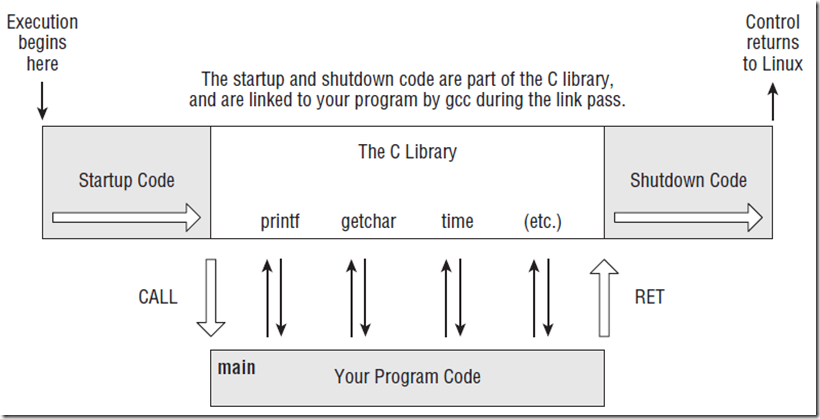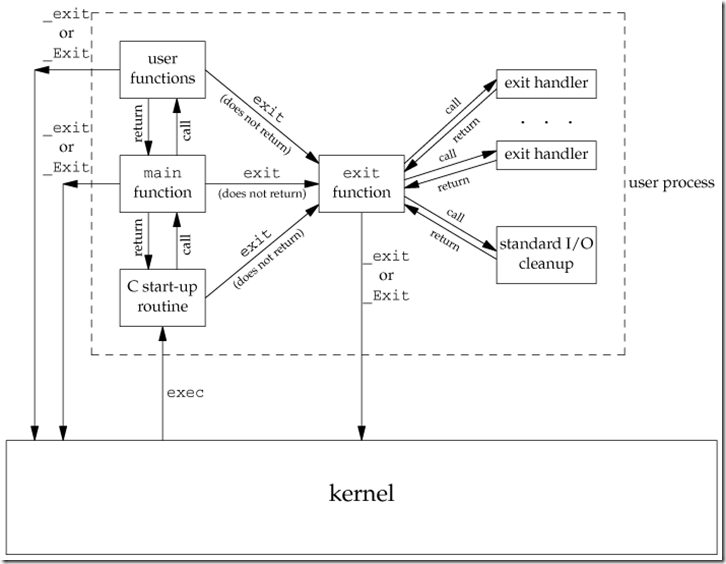副标题:
在汇编中使用Standard C Library。
main函数的执行过程。
main函数与Standard C Library的交互。
C程序是怎么开始和结束的:
在这里,一个C程序就是一个process
Note: The only way a program is executed by the kernel is when one of the exec functions is called.
The only way a process voluntarily terminates is when _exit or _Exit is called, either explicitly or implecitly.
A process can also be involuntarily terminated by a signal (not shown in the previous figure).
A simple example:
#include "apue.h" static void my_exit1(void); static void my_exit2(void); int main(void) { if (atexit(my_exit2) != 0) err_sys("can't register my_exit2"); if (atexit(my_exit1) != 0) err_sys("can't register my_exit1"); if (atexit(my_exit1) != 0) err_sys("can't register my_exit1"); printf("main is done\n"); return 0; /* the result is same as exit(0) */ /* but _exit(0) or _Exit(0) do not deal with exit handlers */ } static void my_exit1(void) { printf("fist exit handler\n"); } static void my_exit2(void) { printf("second exit handler\n"); }
执行结果:
|
main is done |
atexit(void (* func)(void)) 这个函数设定一个process的exit handler,一般来说最多可设定32个(根据具体系统有所不同)。exit() function执行全部的exit handler,按照设定时的反序执行。
注意:函数之前用static修饰只表示这个函数只能在这个文件中被引用,不能在其他文件中引用。没有其他的意思。
我们在main()函数中调用的是return,它返回到C start-up routine, 由它执行exit()。

